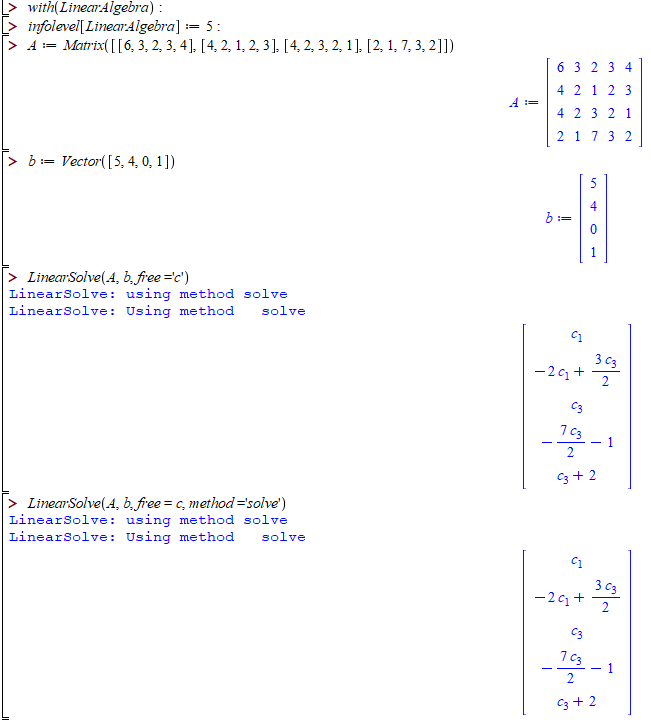Solution for an underdetermined system is not unique:
A = {{6, 3, 2, 3, 4}, {4, 2, 1, 2, 3}, {4, 2, 3, 2, 1}, {2, 1, 7, 3,
2}};
B = {5, 4, 0, 1};
ns = NullSpace[A];
x0 = Sum[C[i]*ns[[i]], {i, 1, Length[ns]}];
x1 = LinearSolve[A, B];
x1 + x0
A . % == B // Simplify (*Solution are: TRUE *)
(*{-(3/2) + 3 C[1] - C[2], 2 C[2], -2 + 4 C[1], 6 - 14 C[1], 4 C[1]}*)
(* TRUE *)
or:
Table[C[i], {i, 1, Length[A[[1]]]}] /.
Solve[A . Table[C[i], {i, 1, Length[A[[1]]]}] == B,
Table[C[i], {i, 1, Length[B]}], MaxExtraConditions -> All] // Expand
A . %[[1]] == B // Simplify (*Solution are: TRUE *)
(*{{C[1], -3 - 2 C[1] + (3 C[5])/2, -2 + C[5], 6 - (7 C[5])/2, C[5]}}*)
(* TRUE *)
Maple 2022.2 solution:

Regards M.I.